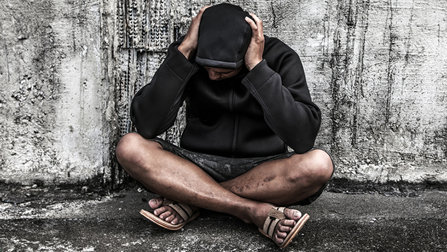The
Horror Show of the
American Addiction Epidemic

Although frightening, the reality of our addiction situation in this country needs to be confronted. Gone are the days of an addict being considered simply a problem in the family for an indeterminate amount of time.
Every day that an addict continues to abuse drugs is one day closer to leaving a scar on their family caused by their overdose or death. The fact is that every day, many die from the scourge that is opiate addiction in this country. Families from every spectrum of life have been torn apart by the death of a loved one.
From 2000 to 2014 nearly half a million people died from drug overdoses. 78 Americans die every day from an opioid overdose. That statistic comes from the Center for Disease Control and Prevention that has been recording the onslaught of addiction on American families.
In recent months, Fentanyl has been in headlines for causing hundreds of deaths due to its extreme potency. Since then, W-18 (an opiate credited as being 100 times more potent then Fentanyl) and carfentanil (used as a large animal tranquilizer) have been found being sold as heroin, both being not only more potent but also more lethal.
Now is the time for action. While tough love is seen, by many, as the only way to get an addict to own up and go into treatment, severing the line completely leaves them to face the exact thing many of them use drugs or alcohol to avoid. Rejection, isolation, and failure can be very strong motivators in many an addiction.
Reaching out and pushing the person to get help and encouragement has an important place.
Five Steps to assist an addict into treatment
1. First you have to clearly determine they are in the fact using. If you suspect a loved one is using, any sense of personal boundaries may be crossed to determine if this is or is not the case. Searching their personal area and asking where they are going may make the loved one upset. This upset however will likely diminish but an ill-fated accident due to addiction will not.
2. Find a treatment for them. When an addict has agreed to go to treatment, the window to get them into treatment can be small and many addicts will flip-flop on the idea of treatment. The last thing you want to have to do during that short window of their reaching for treatment, is to frantically try to find a treatment center. Do your homework and research and have a place lined up.
3. Confront them on what is going on with them. Tell them they are going to treatment and listen what they have to say. With love and kindness, tell them of the reality of what they are doing. Once they agree to go to treatment, validate their decision and act quickly to get them into the treatment program you have already chosen.
4. If this does not work, contact a professional interventionist. While it may cost a little more in some cases, a good interventionist can be invaluable in this situation. As a neutral party, they can be a voice of reason in a very emotionally fueled situation.
5. Get them directly into treatment. Remember there is a very short window of time as described in #2 above. Often an addict will decide to go into treatment and quickly following that decision is a decision to get high “one more time.” So from the moment of their decision to go, stay with them while they pack, arrange their affairs and travel to the treatment center you have chosen.
6. Be supportive. Once an addict has gotten into treatment and is working hard to turn their life around, be proactive in their treatment and let them know you are on their team. Push them to keep going. Push them to make the right choice and move on with their life.
If you do not know where to start, give us a call. Our Intake Coordinators can help you find the best treatment for your loved one.


